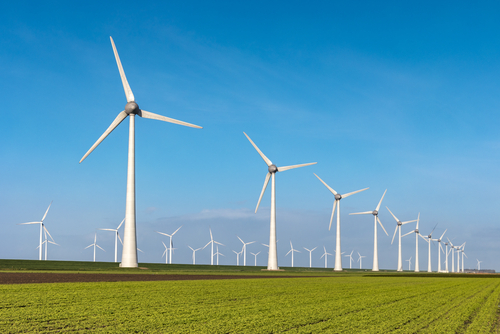BOEM releases proposal for 1.7 million acres of draft Central Atlantic Wind Energy Areas for public review

Pushing forward with the Biden administration’s plans to deploy 30 GW of offshore wind capacity by 2030, the Bureau of Ocean Energy Management (BOEM) this week proposed eight draft Wind Energy Areas (WEAs) off the United States central Atlantic coast for public review and comment.
These areas would cover approximately 1.7 million acres in the waters beyond North Carolina, Virginia, Maryland, and Delaware, a subset of the original 3.9 million acres of the area the Department of the Interior put up for public comment in April. However, these areas are far from final. They could be further tweaked after feedback from stakeholders, ocean users, and government partners of BOEM, especially as this comment seeking is focused on potential conflicts with the draft areas. The agency is particularly interested in a potential U.S. Coast Guard (USCG) fairway for transiting vessels, commercial fishing, a NASA danger zone, and marine habitat areas.
“As BOEM moves forward to identify wind energy areas in the central Atlantic, we continue to prioritize a robust and transparent process, including early engagement with Tribal governments, state and federal agencies, and ocean users,” BOEM Director Amanda Lefton said. “We want to gather as much information and traditional knowledge as possible to help us identify Wind Energy Areas — the offshore areas that are most suitable for commercial wind energy activities while having the fewest apparent environmental and user conflicts.”
As part of that knowledge gathering, BOEM will also further explore the draft areas alongside the Department of Defense, USCG, NASA, and other ocean users. In the lead-up, BOEM worked with the National Oceanic and Atmospheric Administration’s National Centers for Coastal Ocean Science and used its ocean planning model to identify potential offshore locations for renewable energy development with an eye on potential impacts to and conflicts with local resources and ocean users.
The move was met with applause from the wind industry, with the American Clean Power Association (ACP) quickly releasing a statement supporting the draft areas.
“It is especially significant that five of the eight draft WEAs identified are in shallow waters that allow for the use of offshore wind turbines with fixed bottom foundations,” Josh Kaplowitz, vice president for offshore wind at the ACP, said. “These areas represent our best chance to extend the fixed bottom project pipeline on the East Coast that will spark further supply chain investments in the mid-Atlantic and help meet current and anticipated state and federal offshore wind and greenhouse gas reduction goals. Developing offshore wind in these areas has the potential to generate approximately 20.6 gigawatts of reliable, domestic clean energy, which is enough to power 7.2 million homes.”
The ACP added that it hopes to see all of the draft areas carried forward to auction in 2023. For now, comments on those areas will be accepted through Dec. 16, 2022. Virtual meetings organized by BOEM will also be held to focus on the fishing community and environmental organizations, although they will be open to the public.
